Hall of Joyful Longevity (Leshoutang)
 |
| Hall of Joyful Longevity |
Layout & History
The Hall itself, along with the gate hall, side halls, and two additional yards, forms the Hall of Joyful Longevity complex, the Summer Palace's most spacious living quarter. Fronting Kunming Lake and backed by Longevity Hill, with the Hall of Benevolence and Longevity to the east and the Long Gallery to the west, it is also the prime spot for viewing scenery.
In 1750, this complex was built by Emperor Qianlong (1711~1799) as his mother Empress Dowager Chongqing's (1693~1777) living quarter in the Summer Palace. Initially, the main building Hall of Joyful Longevity was two-story with the ground floor for resting and the second floor as a Buddhist chapel.
In 1860, the complex was destroyed by the Anglo-French Allied Forces and rebuilt in 1886 as a single-story structure for Empress Dowager Cixi's convenience.
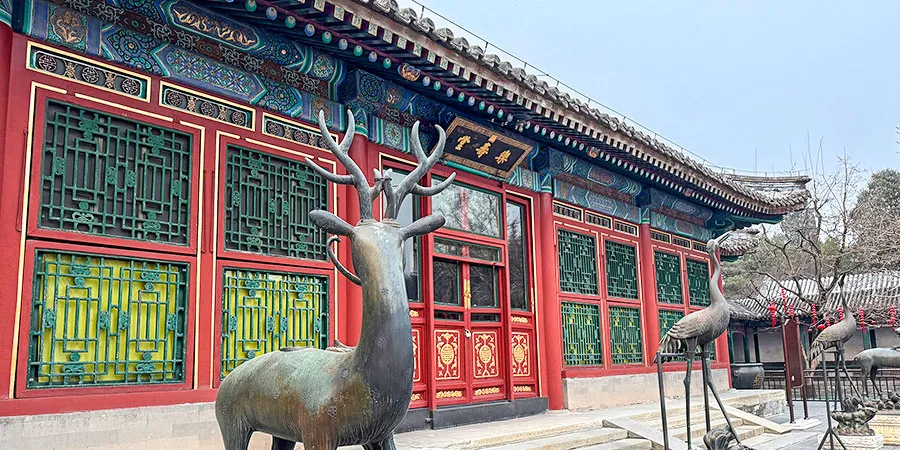 |
What to See Today
Today, visitors can explore the main Hall of Joyful Longevity, viewing displays outside and catching a glimpse of the interior, while other buildings remain closed but their exteriors are still worth admiring.
Key Structure: Hall of Joyful Longevity
The main building, Hall of Joyful Longevity, served as Empress Dowager Cixi's daily living space. At its center stood a throne with a footstool, flanked by fans and large fruit plates for refreshing air, along with four grand gold-plated bronze censers. On either side of the door, the ebony tables were actually hollow for keeping goldfish, with ivory and sandalwood carvings depicting landscapes, pavilions, and figures.
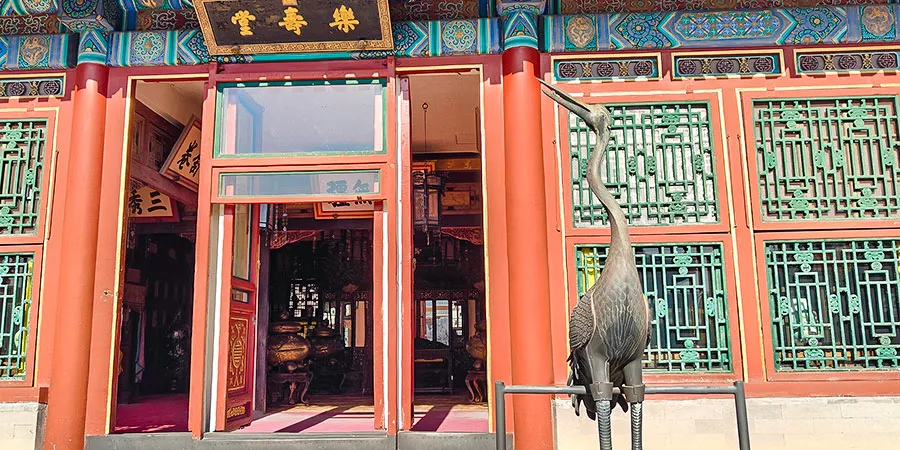 |
| A Glimpse into the Hall's Interior |
To the west was her bedroom, featuring a low bed with silk curtains. On the west wall hung a large gold-plated glass mirror with the character for "longevity" (寿), framed by couplets praising her. A Western clock sat on a table below, one of many gifted by foreign envoys and ministers.
The eastern room served for her dressing, housing two dragon-carved red sandalwood wardrobes filled with countless boxes of attire. Cixi was particular about clothing, often having maids present tens of outfits for selection, with matching accessories always at the ready.
Behind the main hall were nine rooms dedicated to storing her jewels, totaling an impressive 3,000 boxes.
 |
| Courtyard of Joyful Longevity Hall |
Green Ganoderma Rock
In the hall's courtyard lies a verdant rock named Green Ganoderma, stretching eight meters (26.2 feet) long, two meters (6.6 feet) wide, and four meters (13.1 feet) tall. It rests on a carved blue stone pedestal adorned with wave patterns.
However, this rock was once nicknamed the "Bankrupt Rock". Over 400 years ago, an official named Mi Wanzhong (1570~1631) discovered this boulder in the mountains and was so enchanted by it that he wanted to bring it home to decorate his garden.
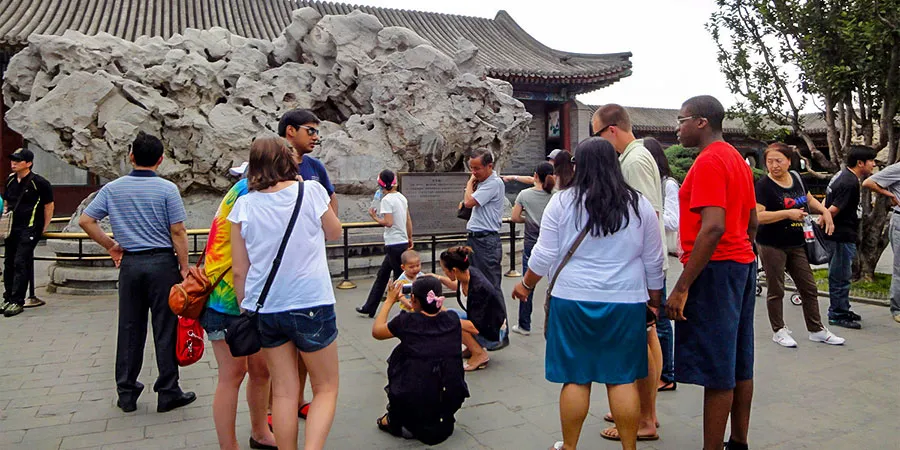 |
| Viewing the Green Ganoderma Rock |
Mi hired over 100 people and used water to create icy paths in winter for the horses to pull the rock. However, the enormous costs led to his bankruptcy (hence the nickname), and the rock was abandoned by roadside.
In 1751, Emperor Qianlong saw this rock and thought it resembled a green Ganoderma, a kidney-shaped fungus with a cap that is revered in traditional Chinese medicine for its longevity-promoting properties. Ignoring its bankruptcy tale, he moved it into the Summer Palace and gave it a more auspicious name "Green Ganoderma Rock".
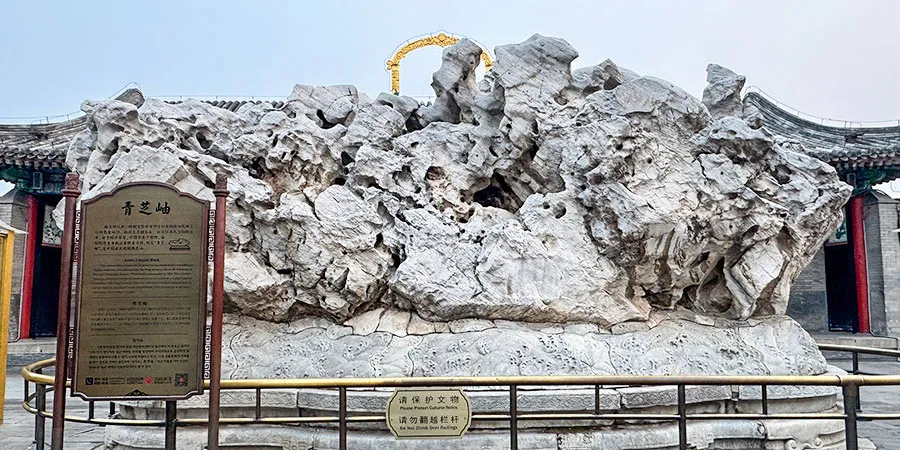 |
| "Bankrupt Rock" |
Symbolic Decorations in Front of the Main Hall
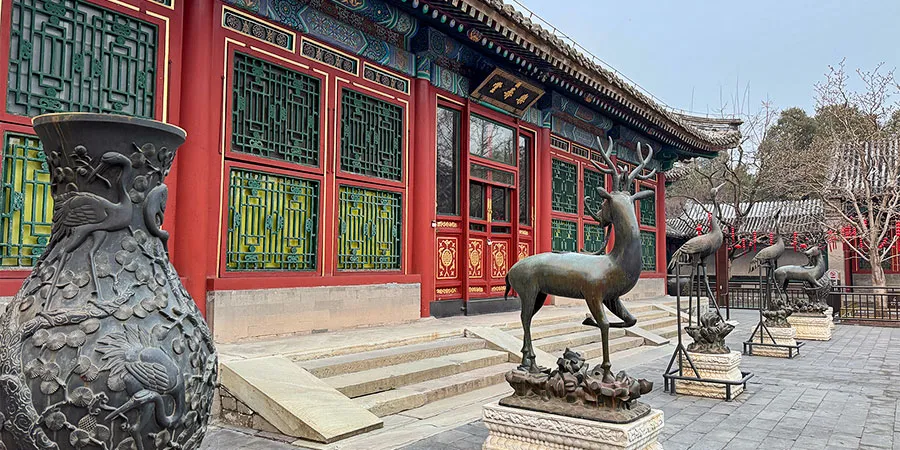 |
| Front Display of the Joyful Longevity Hall |
Adding to the ambiance are magnolias, crabapples, and peonies, which not only fragrance the air but also represent nobleness, beauty, and wealth, collectively signifying that the hall is filled with abundance.
Intimacy with Nature Gate Hall
Nestled beside Kunming Lake, the Intimacy with Nature Gate Hall serves as the main entrance to the Hall of Joyful Longevity. Outside stands a stone pier with carved railings, where Empress Dowager Cixi embarked on her boat tours.
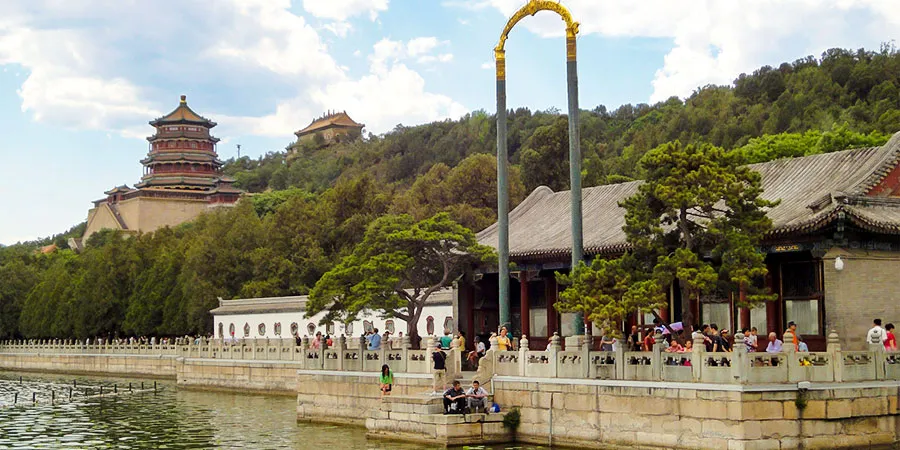 |
| Pier of Intimacy with Nature Gate Hall |
On both sides of the gate are corridors, featured by a long white-washed wall adorned with colorful glass windows, each presenting a picturesque lake view.
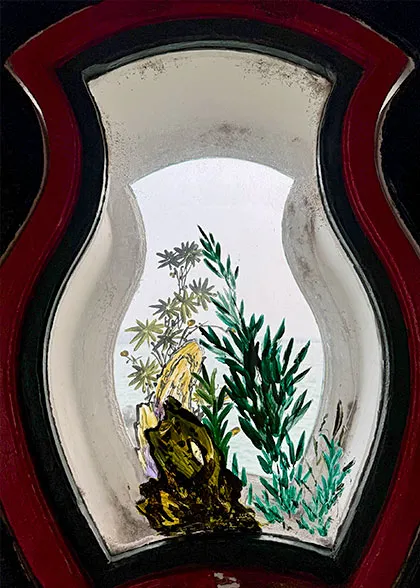 |
| A Picturesque Window of the Gate Hall |
Fan-Shaped Hall
Benevolent Fan Hall, an auxiliary courtyard northwest of the Hall of Joyful Longevity, boasts a concave, arcuate fan-like main building surrounded by eight white stones as the fan's framework. Additionally, the hall's lattice windows, as well as the throne, incense table, palace lanterns, and other interiors, are all designed in a fan shape.
The fan-shaped design of the hall was inspired by an ancient anecdote. About 1,700 years ago, as an official was going to serve in a distant place, his friend gifted him a fan. The official immediately grasped the deeper meaning and replied, "Just as a fan brings a cool breeze, and I will bring benevolence to the people and benefit the region!"
Eternal Longevity Hall
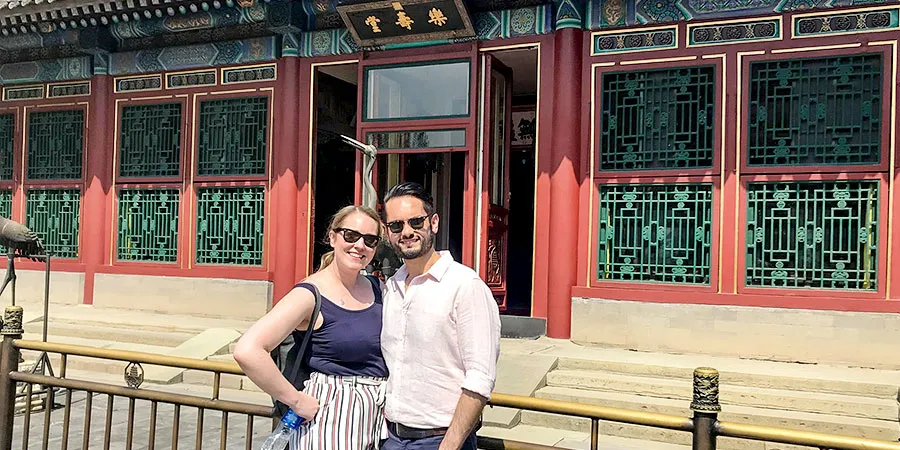 |
| Hall of Joyful Longevity |
The Eternal Longevity Hall is an auxiliary living courtyard for the Hall of Joyful Longevity. It is nicknamed the Chief Eunuch's Hall, as it was once inhabited by Li Lianying (1848~1911), a eunuch serving Empress Dowager Cixi for decades. He gained so much of Cixi’s favor that he was rewarded with his own courtyard in the Summer Palace.
![]() Next: Longevity Hill
Next: Longevity Hill
![]() Related Link: Summer Palace Travel Tips
Related Link: Summer Palace Travel Tips